Io Interactive astounded us all in 2016 when they demonstrated that their episodic approach to Hitman was actually a really, really good idea. If you didn’t collect the missions month-by-month, you’ve now got the opportunity to buy Hitman season 1 as a boxed-copy game, which we certainly recommend you do. But before parting with cash, why not find out how well the game runs? Welcome to the PCGamesN performance analysis centre, agent.
Like to mess people up without limits? Try a superb sandbox game on PC.
Our tech reports are designed to offer you the broadest picture possible, using hardware of similar spec to what most gamers have. We test the game on all graphical settings using an i5 powered rig with 8GB of RAM, and try to hit 60 fps with four of the most popular graphics cards. Even if your specs are not identical to our set ups, you should still be able to assess what kind of performance you can expect from your own machine.
Graphics options
For the PC connoisseur, Hitman is unfortunately lacking in options. There are just 13 settings in the graphics menu, which is very slim compared to the twenty-something options offered by the likes of The Witcher 3: Wild Hunt. The key ones are all there though; texture quality and filtering, shadow maps and resolutions, an overall level of detail selector, and an SSAO toggle. Anti-aliasing can be set to SMAA, TXAA, or off. There’s also the option to super-sample the image, should you have the horsepower.
There’s no FOV slider, but that’s not too unusual for a third-person perspective game. You also won’t be able to find a frame rate limiter, but you can of course restrict it using v-sync.
In good news, these graphic options can be adjusted in-game without quitting out to apply them, making it far easier to tweak.
Graphics analysis
Tested on an Intel i5 6500k @3.2GHz, 8GB of RAM, Nvidia GTX 1060, Windows 10
For our graphics analysis we’d normally compare screenshots taken on the four standard presets of ultra, high, medium, and low. However Hitman, like several games released in the past few months, opts not to offer presets. Handily the majority of the settings provide four options, so it’s mostly a case of selecting the lower, middle, high, or top option in order to ‘create’ a preset.
Ultra
As you can see, on ultra settings Hitman is a lovely looking game. While it doesn’t go for a photorealistic approach (human characters look like walking shop mannequins), the world is packed with wonderfully dense detail. From the chips on the edge of the flagstones to the lovely soft shadows in every nook and cranny, there’s little to complain about. There’s even a nice shine on Agent 47’s bald head.
With its large open sandboxes populated with dozens of props and NPCs, we’d expect Hitman to punish your GPU a bit. And it does, but Io have made certain it’s optimised for 1080p play. With the mid-range GTX 1060 card, you can expect to get an average of 70+ fps at ultra settings, which is certainly very acceptable.
High
There’s not a huge difference between ultra and high settings. The main difference is the draw distance; ultra’s textures remain sharper at the furthest end of the town square area, while the high ones begin to look a little fuzzier around the recessed circle to the left and beyond. The overall image looks a touch different, as if viewed through a different grade filter, thanks to using FXAA instead of SMAA anti-aliasing, and textures filtered at anisotropic 8x instead of 16x.
These changes boost the frame rate, with the same rig providing 78 fps. It’s not a huge leap over ultra – which is already a smooth experience – but if extra frames are important to you, high still looks lovely.
Medium
The big difference between high and medium settings are the shadows. Complexity is lost at this level, and some shadows are missing altogether. Silhouettes, like the one cast by the cafe chair, become blurred and lack definition. Within the canopy of the parasols there’s far less shading, with the wooden struts appearing far brighter. Overall the shadows are lighter, with a more grey than black tinge.
Should you be willing to make such sacrifices, you’ll be running at an average rate of 85 fps. That’s quite a margin over the 60 fps we all like to play at, meaning if your specs are lower than our test rig you could still see good performance.
Low
At low settings all non-essential shadows have been removed, leaving this outdoor scene looking quite artificial. Remaining shadows are also robbed of detail, with the tree canopy casting a blob silhouette rather than individual leaves. Anti-aliasing is turned off, which makes every edge sharp and jagged. Discounting that though, there’s not a huge difference in the overall look between medium and low. Textures are certainly lower res, but they’re not the smeary mess than many other games offer. By bringing down the graphical settings to their lowest levels, the average frame rate clocks in at 91 fps.
To see how detail varies between the highest and lowest settings, take a look at these images. While there’s not a huge difference between the two (the wall especially holds up well on low), you can instantly see how the lack of shadows change the feeling of the scene. The pebbledashed ground textures are blurry and lighter on low, which means the pebbles themselves look flat rather than raised.
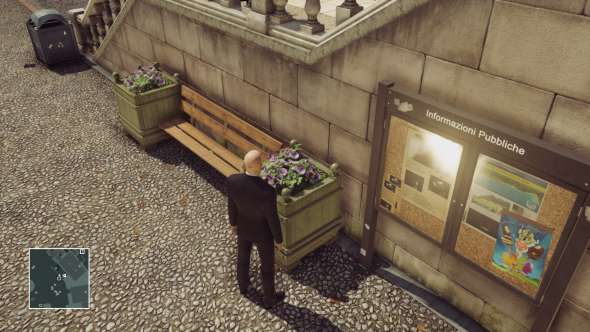 Ultra (larger image)
Ultra (larger image)
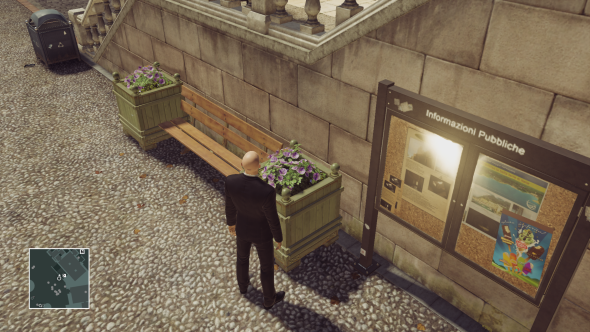 Low (larger image)
Low (larger image)
Performance Benchmarks
To see how Hitman performs on various hardware setups, we have tested the game on four graphics cards; two from Nvidia, and two from AMD. We’ve sampled the most popular cards from the current and last generation of GPUs in order to offer the most useful information.
All four cards are tested with every texture option up as high as they’ll go, every graphical effect turned on, and using the DirectX 12 API. For the test we use the game’s benchmarking tool, which uses scenes of various complexity, including exterior and interior locations, and crowd shots.
In the graph below you can see how all four cards perform.
As you can see, there’s a strong showing across the board, meaning great Hitman performance is within your grasp even if you’re on older or lower-priced hardware. The GTX 1060 and RX 470 aren’t even competing cards, yet there’s only three frames between them. The previous-gen R9 380 is also merely 10 frames behind our best-performing GPU.
There is a hitch though; all cards have notably poor minimum fps levels. The GTX 970 sunk as far as 10fps in the benchmark. But while these figures look alarming, the actual experience of playing Hitman is much less upsetting. The frame rate does fluctuate wildly at times, soaring and dipping as you move from area to area, but the average fps should tell you what you need to know. Indeed, when the benchmark report came back I was surprised to see such low figures; while there’s occasionally a little slow down I’d never noticed anything quite so poor by eyesight alone.
It’s worth noting that the minimum fps recordings differ from software to software. FRAPS reported a much higher figure compared to the very low findings of the game’s official benchmark tool. Unfortunately FRAPS doesn’t work with DirectX 12 turned on, and other solutions like OCAT similarly refused to play nicely.
It appears that something in the benchmark or DirectX 12 coding isn’t brilliant, but thankfully our graphics technology has enough grunt to power through and make Hitman play great on PC. Don’t let those low fps figures deter you. Should you be heavily affected by low frame rates, I did find that switching to DirectX 11 allowed me to play at ultra settings with far more favourable minimum fps levels.
How to run Hitman at 60 fps
We all want to play at a buttery smooth 60fps, and chances are you’ll be able to play at exactly that even if you’re running last generation hardware. In this section we break down the graphics options and show you exactly what options to tweak to keep Hitman running smoothly.
Nvidia GTX 970
In our ultra benchmark test the GTX 970 was the worst performing card, but that’s very much a ‘worst’ in inverted commas. The average frame rate was a solid 60, meaning you can play the game at ultra detail with SMAA anti-aliasing, anisotropic 16x texture filtering, and ultra shadow mapping, all with DirectX 12.
With 60 fps very much being on the knife-edge though, should you find the frame rate dipping I’d recommend dropping shadow maps down a notch. There’s also the option of swapping out the API from DirectX 12 to 11, which is done from the game’s launcher rather than in-game settings menu.
Nvidia GTX 1060
With the GTX 970 performing so solidly, it’ll come of no surprise to learn that a card from the 10 series performs even better. You can run Hitman at full detail with DirectX 12 at 74 fps on a GTX 1060, meaning there’s absolutely no tweaking required to achieve the gold standard frame rate.
AMD Radeon R9 380
The last generation of AMD tech holds up great, certainly helped by the fact that Radeon cards deal with DirectX 12 really well. At full whack settings the R9 380 pushes a respectable 64 fps, meaning there’s no need to adjust anything to hit 60.
AMD Radeon RX 470
Once again there’s no need to make any concessions with AMD’s RX 470. It pushes 71 fps on average, meaning it’s within touching distance of the Nvidia GTX 1060 (a card it doesn’t even directly compete with). That’s AMD’s DirectX 12 optimisation at play, so feel free to crank up the settings if your rig is powered by this card.
How does Hitman run in 4K?
Hitman runs solidly at 1080p, but what if you own a 4K display? Our UHD test rig – rocking an i7 6600K CPU, an Nvidia GTX 1080, and displaying on an Acer Predator 4K monitor – copes surprisingly well. At a dizzying 3840 x 2160 on ultra settings, Hitman runs at an average of 54 fps, and a minimum of 14 fps. That’s very playable, especially considering the size of the environments.
A quick dip into the options menu to turn the shadows down, or lessen the AA quality just slightly should get you solid 60 fps performance on a GTX 1080, then. That means those with 1070s and below will need to be a bit more heavy-handed with the tweaking to get stable frame rates above 60, but that’s in line with what we’d expect – models below the GTX 1080 aren’t really intended as thoroughbred 4K performers.
Conclusion
Any game that features wide-open sandbox environments is practically guaranteed to hammer your GPU, but I’ve been pleasantly surprised to see Hitman deal admirably across a wide variety of cards. At ultra settings, not one of our four test GPUs did worse than 60 fps on average.
There is the issue of low minimum fps counts to contend with. Hitman could do with better optimisation across the board, as all cards tested resulted in very low results in this field. However, in practice, the frame rate drops low so infrequently it’s unlikely you’ll notice it in regular play. For the most part, you’re going to experience a lovely (murdery) ride when playing Hitman on PC.
The settings menu is a touch anemic. While everything we’d want is present and correct, there’s not the level of minute control offered in many other PC ports. Being able to tweak mesh quality and other equally granular aspects would have been very welcome.
Hitman may stumble in a few areas, but it’s not a poor port by any means. The game, nor your system, won’t crash and burn. Your missions with Agent 47 are going to go great. But, like the bald assassin, the Hitman PC port can occasionally feel a little like getting the most out of a basic toolset.

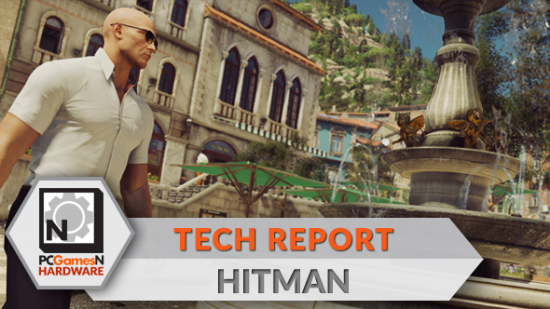
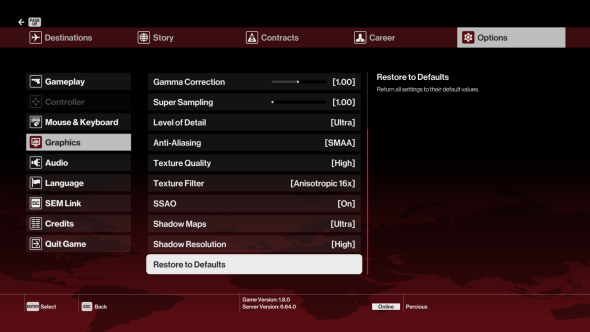 (
(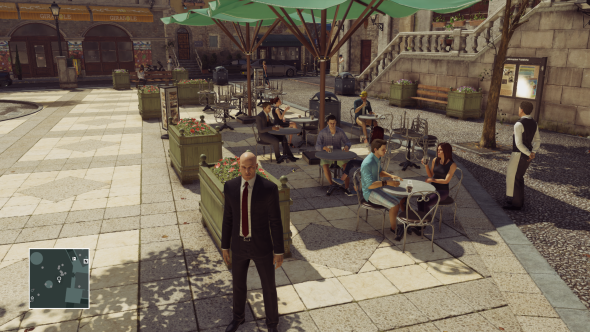 (
(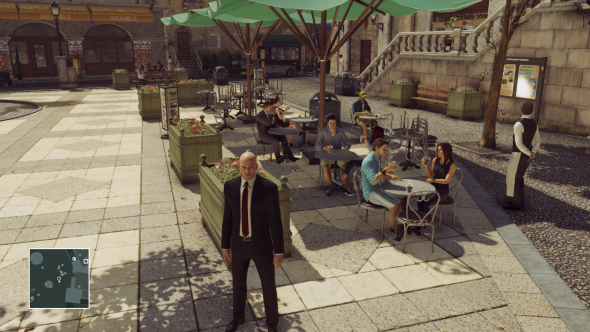 (
(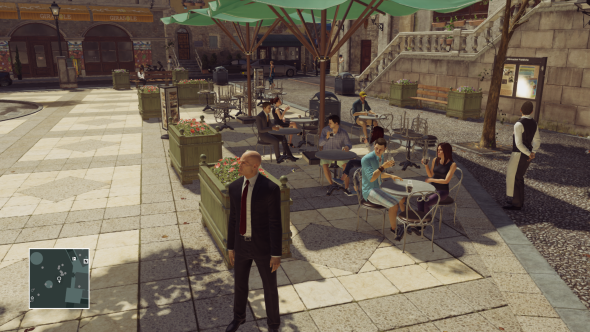 (
(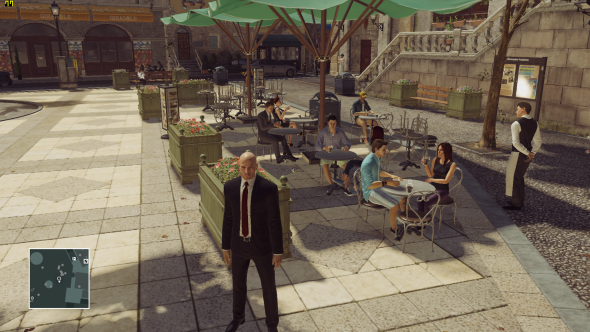 (
(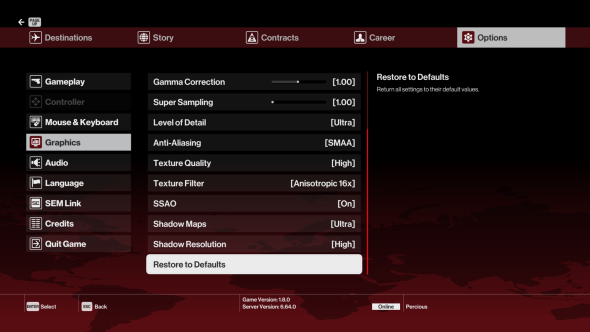 (
(